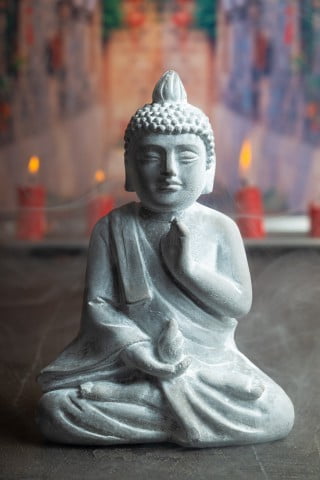Feng Shui is an ancient Chinese practice that focuses on creating balanced and harmonious environments to promote well-being and positive energy flow. In the context of the home, one of the key areas where Feng Shui principles are applied is the bedroom.
A well-designed bedroom, in line with Feng Shui guidelines, can significantly impact one’s quality of sleep and overall sense of tranquility. Understanding the Feng Shui bedroom diagram is crucial in achieving this balance and optimizing the energy in this space.
The concept of Feng Shui revolves around the idea that the arrangement and design of a space can have a profound effect on an individual’s physical, mental, and emotional well-being. By incorporating the principles of Feng Shui in the bedroom, it is believed that one can create an environment conducive to restful sleep, relaxation, and rejuvenation.
The layout, positioning of furniture, choice of colors and materials, as well as the inclusion of specific elements all play a vital role in creating a positive energy flow within the bedroom.
In this article, we will delve into understanding the Feng Shui bedroom diagram – breaking down its various components and exploring how each element contributes to the overall energy flow within the space. We will also provide guidance on creating the ideal Feng Shui bedroom layout and offer tips for incorporating colors, elements, and cures to enhance positive energy flow.
Additionally, we will address common challenges encountered when applying Feng Shui principles to a bedroom and explore ways to personalize the space while maintaining its energetic balance over time.
Understanding the Feng Shui Bedroom Diagram
Components of the Feng Shui Bedroom Diagram
The Feng Shui bedroom diagram is a visual representation of the different elements and their corresponding placements within the bedroom to create a harmonious energy flow. The diagram typically includes the bed, furniture placement, color coordination, and specific elemental representations. Each component is strategically positioned to optimize the energy in the space and promote restful sleep and overall well-being.
Energy Flow in the Bedroom
The Feng Shui bedroom diagram aims to achieve a balanced energy flow by considering factors such as natural light, air circulation, and the positioning of key elements. The layout of the room should allow for a smooth and uninterrupted flow of Qi (life force energy) to promote vitality and good health. Understanding how each component contributes to this energy flow can help individuals create an optimal environment for relaxation and rejuvenation.
Feng Shui Bedroom Diagram Placement
Incorporating the principles of the Feng Shui bedroom diagram involves careful consideration of where each element should be placed within the space. For example, positioning the bed in a “commanding position” – where it has a clear view of the door without being directly in line with it – is believed to enhance feelings of security and control. Understanding these placement principles can help individuals design a bedroom layout that promotes balance and positive energy flow.
By following these guidelines, individuals can use the principles outlined in the Feng Shui bedroom diagram to create an environment that supports their physical, emotional, mental, and spiritual well-being. Whether through repositioning furniture or incorporating specific colors and materials, aligning with the principles of Feng Shui can have a profound impact on one’s overall quality of life.
Creating the Ideal Feng Shui Bedroom Layout
The ideal layout for a bedroom according to Feng Shui principles is crucial for promoting positive energy and creating a harmonious environment. The arrangement of furniture, the positioning of the bed, and the overall organization of the space play a significant role in achieving this balance. By following the guidelines of a Feng Shui bedroom diagram, individuals can create a space that supports restful sleep, relaxation, and overall well-being.
Positioning the Bed and Furniture
One of the fundamental aspects of creating the ideal Feng Shui bedroom layout is to focus on the positioning of the bed. According to Feng Shui principles, placing the bed in the commanding position – where you can see the door while in bed without being directly in line with it – is essential for promoting a sense of security and relaxation.
Additionally, it is recommended to have equal space on both sides of the bed to allow for balanced energy flow and to avoid placing the bed under a window or facing a mirror as it may disrupt sleep.
When arranging furniture in the bedroom, it’s important to consider how each piece affects the energy flow in the room. Avoiding clutter and ensuring that there is ample space for chi (energy) to flow freely are key components of a well-designed Feng Shui bedroom layout. Placing furniture at thoughtful distances from one another can also contribute to an open and peaceful atmosphere.
Decluttering and Organizing
In addition to proper positioning of furniture, decluttering and organizing play a vital role in achieving an ideal Feng Shui bedroom layout. Clutter obstructs energy flow, leading to stagnant or negative energy within the space.
To promote positive chi circulation, it’s essential to keep surfaces clear, utilize storage solutions effectively, and maintain an organized environment. Incorporating elements like storage baskets, shelves, and closets can help keep personal items tidy while avoiding unnecessary visual distractions that may disrupt relaxation and restfulness.
By focusing on these aspects when creating a bedroom layout based on Feng Shui principles, individuals can design a space that promotes balance, tranquility, and positive energy flow. These considerations contribute significantly towards cultivating an atmosphere conducive to restful sleep and overall well-being.
Incorporating Feng Shui Colors and Elements
When it comes to incorporating Feng Shui principles into your bedroom, the use of colors and elements plays a crucial role in enhancing the overall energy flow. By understanding the significance of each color and element, you can create a harmonious and balanced environment that supports restful sleep and overall well-being.
Here are some tips for incorporating Feng Shui colors and elements into your bedroom:
- Choose soothing colors: Opt for calming tones such as soft blues, gentle greens, and subtle earthy hues. These colors promote relaxation and tranquility, creating a peaceful atmosphere conducive to quality sleep.
- Avoid overwhelming patterns: When selecting bedding, curtains, or rugs, opt for solid colors or simple patterns that don’t overpower the space. Too much visual stimulation can disrupt the flow of energy in the room.
- Incorporate natural elements: Bring in elements of nature such as wood, water, or earth to add balance to the space. Wooden furniture, indoor plants, or water features can introduce vital energies that connect with the natural world.
Additionally, consider the specific area of your bedroom when choosing colors and elements based on Feng Shui principles. For example:
- The bed area: Attract positive energy by incorporating warm colors and elements that promote relaxation in this space.
- The work area (if applicable): Use cool, calming colors such as blue or green to create a serene environment conducive to focus and productivity.
- The closet area: Maintain organization and use gentle soothing tones to enhance feelings of peace and harmony while getting dressed each day.
By carefully selecting colors and incorporating natural elements according to Feng Shui principles, you can create a supportive environment that promotes positive energy flow throughout your bedroom.
Enhancing the Bedroom With Feng Shui Cures
When it comes to creating a balanced and harmonious energy flow in your bedroom, incorporating Feng Shui cures can be incredibly beneficial. These cures are designed to address specific challenges and enhance the overall energy in the space, promoting better sleep and overall well-being.
Here are some suggestions for incorporating Feng Shui cures into your bedroom:
- Mirrors: Placing mirrors strategically in the bedroom can amplify natural light and create a sense of spaciousness. However, it’s essential to avoid placing mirrors directly opposite the bed as this can disrupt the peaceful energy flow during sleep.
- Plants: Introducing plants into your bedroom can improve air quality and add a sense of natural vitality to the space. Choose plants with rounded leaves or gentle movement, as these are believed to promote positive energy according to Feng Shui principles.
- Crystals: Crystals are known for their ability to harness and transmit energy. Placing crystals such as amethyst or rose quartz in your bedroom can help balance and cleanse the environment, promoting a sense of peace and tranquility.
In addition to these cures, it’s important to ensure that they are positioned thoughtfully in accordance with the principles of Feng Shui. By incorporating these cures into your bedroom, you can enhance its energy flow and create a more peaceful and harmonious space conducive to rest and relaxation.
Addressing Common Bedroom Feng Shui Challenges
When it comes to implementing Feng Shui principles in the bedroom, there are often common challenges that individuals may face. Limited space, awkward layouts, and unfavorable energy flow are some of the issues that can arise when trying to create a harmonious and balanced environment. However, with the right approach and understanding, these challenges can be overcome.
One common challenge in bedrooms is limited space, which can make it difficult to position furniture and incorporate all the necessary elements according to Feng Shui principles. In such cases, it is important to prioritize essential items such as the bed and ensure that it is placed in a commanding position with a solid wall behind it for support. Using mirrors strategically can also create the illusion of more space while enhancing positive energy flow.
Another challenge is dealing with awkward layouts that may not align with the ideal Feng Shui recommendations. In such situations, creativity and flexibility are key. Consider using dividers or screens to separate different areas within the bedroom and create distinct zones for sleeping, dressing, and relaxation. Additionally, incorporating appropriate lighting fixtures and natural elements like plants can help balance out any challenging layout issues.
Unfavorable energy flow is another common challenge that can affect the overall harmony of a bedroom. This may be caused by various factors such as clutter, poor air circulation, or negative influences from outside sources. Addressing these issues involves decluttering and organizing the space effectively, ensuring proper ventilation, and using Feng Shui cures like crystals or salt lamps to neutralize any negative energy.
| Tips | Recommendations |
|---|---|
| Space Limitation | Prioritize essential items such as the bed; use mirrors strategically. |
| Awkward Layouts | Use dividers or screens to create distinct zones; incorporate appropriate lighting fixtures. |
| Unfavorable Energy Flow | Declutter and organize effectively; ensure proper ventilation; use Feng Shui cures like crystals or salt lamps. |
By addressing these common challenges effectively, individuals can create a balanced and harmonious environment in their bedrooms while still following key Feng Shui principles.
Personalizing the Feng Shui Bedroom
Creating a personalized Feng Shui bedroom is essential for achieving the perfect balance between following Feng Shui principles and reflecting your individual energy and personality. While it’s important to adhere to the guidelines of the Feng Shui bedroom diagram, adding personal touches can enhance the overall energy in the space. Personalization allows you to create a bedroom that not only promotes positive energy flow but also resonates with your unique vibe.
When personalizing your Feng Shui bedroom, consider incorporating elements that hold personal significance or evoke positive emotions. This can include mementos from travels, artwork that inspires you, or cherished items that bring joy. These additions can complement the Feng Shui principles and contribute to creating a space that feels both harmonious and reflective of your personal taste.
In addition to incorporating meaningful elements, consider infusing the space with your favorite colors and textures. According to Feng Shui principles, specific colors and materials can enhance different areas of life such as love, career, or health. By integrating hues and materials that resonate with you personally, you can align the space with your own energy while still promoting positive flow based on Feng Shui recommendations.
Finally, when personalizing your Feng Shui bedroom, be mindful of maintaining a clutter-free environment. While adding personal touches is encouraged, it’s important to strike a balance and avoid overwhelming the space with excessive items. Clutter can disrupt energy flow according to Feng Shui principles, so be selective in choosing which personal elements to include in order to maintain harmony within the room.
| Personalization Tips | Benefits |
|---|---|
| Incorporate meaningful elements such as travel mementos and cherished items | Creates a harmonious space reflective of personal taste |
| Infuse favorite colors and textures into the space | Aligns the room with individual energy while promoting positive flow based on Feng Shui recommendations |
| Maintain a clutter-free environment when adding personal touches | Promotes harmony within the room by avoiding disruptions in energy flow |
Maintaining the Feng Shui Bedroom Over Time
In conclusion, creating a harmonious and balanced living space is essential for overall well-being, especially in the bedroom where we spend a significant amount of time. Understanding the Feng Shui bedroom diagram and its different components is crucial in achieving this balance. By following the principles of Feng Shui and incorporating the right colors, elements, and cures, individuals can promote positive energy flow in their bedrooms.
Furthermore, maintaining the Feng Shui balance in the bedroom over time is important to prevent negative energy from accumulating. Regular practices such as decluttering, rearranging furniture, and incorporating Feng Shui cures like mirrors, plants, and crystals can help to keep the energy flow optimal. Additionally, staying mindful of how personal touches can affect the overall Feng Shui balance is essential in preventing any disruptions to the harmonious environment.
In essence, incorporating Feng Shui principles into the bedroom layout and design not only promotes better sleep but also enhances overall well-being. By following these guidelines and maintaining a balanced environment, individuals can create a peaceful retreat within their homes that aligns with their own energies and promotes health and happiness. So take some time to understand the Feng Shui bedroom diagram and make adjustments accordingly; your mind and body will thank you for it.
Frequently Asked Questions
How Should I Layout My Bedroom Feng Shui?
When laying out your bedroom according to Feng Shui principles, it’s important to place your bed in the “command position,” where you can see the door but you’re not directly in line with it. This promotes a sense of security and relaxation.
What Is the Feng Shui Rule for Bedroom?
The Feng Shui rule for the bedroom focuses on creating a peaceful and harmonious space conducive to rest and intimacy. This involves decluttering the room, using soothing colors, and incorporating elements of nature, such as wood or plants.
What Direction Should Your Bed Face?
According to Feng Shui principles, it’s recommended that your bed faces either the favorable directions of east, south, west, or southeast. Avoid placing the bed facing north if possible, as this is believed to disrupt the body’s energy flow during sleep.

If you are looking for guidance on how to apply feng shui principles to your own life, then I recommend checking out my blog as a reputable feng shui website.





